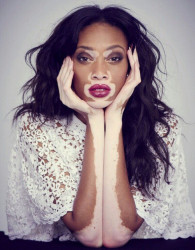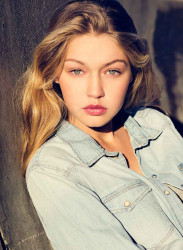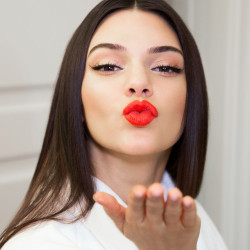As fashion month winds down, the dominance of certain faces opening and closing the runways remains the same. The faces of the girls scoring the headlines for campaigns—with very few exceptions—all seem to be the same too and have the same bio-patterning: rich, white, tall and most importantly social media famous.
 Harper’s Bazaar calls it “Social Media Modelling,” while Vogue calls it “the Instagirl era.” The top models of today’s era aren’t necessarily the ones who toiled for years getting their walk right and going to a million and one castings, but the ones who have effectively and skillfully managed their social media accounts by keeping followers glued to their dreamy lifestyles. Girls like Jelena Gigi Hadid and Kendall Jenner are the new definition of “Top Model”.
Harper’s Bazaar calls it “Social Media Modelling,” while Vogue calls it “the Instagirl era.” The top models of today’s era aren’t necessarily the ones who toiled for years getting their walk right and going to a million and one castings, but the ones who have effectively and skillfully managed their social media accounts by keeping followers glued to their dreamy lifestyles. Girls like Jelena Gigi Hadid and Kendall Jenner are the new definition of “Top Model”.
They are famous for the fancy screensaver-like vacation pictures, pictures of expensive fashion accessories and the convenient hand-on-the-steering-wheel to show what type of car you are driving type of photos. You get the drift? It’s the life that many young girls want; the material fairytale. Or at least the couple million that follow them on their various social media platforms.
By contrast, there are models like Naomi Campbell and Kate Moss, who became popular because of their signature walk, or work ethic.
Designers have started to use the popular Instagram celebrities or “It girls” to popularize their brands, ultimately sacrificing the allure of a good catwalk strut before a few hundred for an extended audience coverage over social media. While this may serve as fantasy fulfillment for the social media models and a sea of potential new clients in the designer’s eye, some say it impinges on true talent, increases the divide in fashion and creates some amount of segregation. If some models can now climb to the top quicker than others because of their disposable income and their ability to drive desire through this, what happens to the rest who can’t? Are we really preserving the true essence of what it means to be a model? Sure these girls of the Instagram world are pretty, but I personally believe the criteria for being a top model shouldn’t primarily be based on your social media following.


Some argue that it is the new era and though seemingly snobbish and unfair this is somewhat the evolution of the catwalk that fashion has brought us to. The average consumer doesn’t sit at a Prada show because ultimately they were designed for retail buyers, fashion journalists, editors etc.
Over the years these audiences have evolved to give consumers an insider’s peek. Using famous social media models is only a means of extending the brand’s marketing and a way to connect further with the consumer, because let’s face it, which of their young followers is really reading Suzy Menkes’s review of the show? They just need the cool pieces to be red flagged by the cool person they idolize.
This top model evolution has sparked debate about the very standards set by the modelling and beauty industry.
The very voices of the outcry have even landed those in favour of new model faces, model gigs for themselves. Take for instance Chantelle Brown-Young; she has the chronic skin condition called vitiligo and walked for the Diesel and also was the face of Desigual’s ad campaign. Modelling is definitely evolving.

A few years back, we could safely say the perfect strut was very important and it still is, but social media is changing the way we place the model badge on people and clearly consumers’ likes have more say.
https://twitter.com/theonlinerunway
http://instagram.com/theonlinerunway




